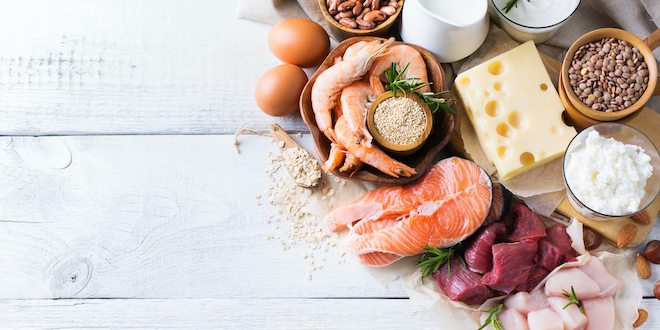Read on to find out the best protein picks for people with diabetes.
Eating foods with protein is a key part of a healthy diet. After all, protein is an essential nutrient, which helps to build, repair and maintain your tissues and organs. When you have diabetes, it is important to be particularly conscious about the types of proteins you eat as some are better for your health than others.
How much protein should I eat?
Typically, people with diabetes don’t need to consume any more or less protein than those without, unless there are other complications such as kidney disease. Diabetes Canada recommends that 15% to 20% of a person’s daily calorie intake come from proteins—or 0.8 grams of protein per kilogram of body weight. That means someone weighing 150 pounds (or 68 kgs) would need about 54 grams of protein a day.
According to Canada’s Food Guide, you should be choosing proteins from plant sources as often as possible. That’s because these proteins often provide more fibre and less saturated fat than other protein types, which is better for your heart health. In addition, there is some evidence that replacing animal protein with plant protein may help control your blood sugar level. In addition, several studies have linked diets high in red meat proteins, for example, to a greater risk of type 2 diabetes, compared to those that are high in plant-based proteins.
Top 10 protein-rich plant-based foods
Many people wrongly assume protein primarily comes from animal sources. Here are some key foods to consider for protein sources.
- Tofu and edamame
- Lentils - check out our recipe for Red lentil soup
- Beans (e.g., kidney, lima, black and fava)
- Seeds (e.g., flax, chia, pumpkin)
- Oats (steel-cut oats are best)
- Peas (e.g., black-eyed or split peas)
- Chickpeas
- Quinoa - try our Quinoa pizza snack bites
- Almonds (walnuts and pistachios are good options too)
- Certain fruits and vegetables (eg., broccoli, asparagus, artichoke, berries and cantaloupe)
Top 10 protein-rich animal-based foods
If you still prefer to get your protein from animal sources, make sure to opt for lean cuts of meat for less saturated fat. Here are the best choices:
- Fish (especially cod, tuna, salmon, halibut and sole)
- Seafood (e.g., shrimp, scallops)
- Poultry with skin removed (note that dark meat is a little higher in fat but still high in protein too)
- Eggs (also high in vitamins A, B, E and K, as well as folic acid)
- Cheese (e.g., parmesan, cheddar)
- Low-fat yogurt (packed with priobiotics too for your gut)
- Low-fat milk
- Lean beef or pork
- Lamb (chop, leg or roast)
- Game (e.g., rabbit, venison or goose without the skin)
Find more information on high-quality protein sources here.
Any tips for getting more protein into my diet?
Some easy ways to get a bigger protein hit into your day include:
- Making your own trail mix using whole grain cereal with nuts and seeds (here’s a good recipe)
- Adding soft tofu to a soup to make it creamier
- Adding a bean salad or bowl of vegetarian chili to your dinner
- Having some hummus with fresh vegetables
- Putting some peanut butter on your celery sticks
Here’s a good recipe for a high-protein snack.
Remember that including some protein into your meals every day is a good move towards maintaining a healthy diet. Just pay attention to where your protein is coming from when you have diabetes to reap the optimal benefits.
 Diabetes Care Community Learn, connect and care
Diabetes Care Community Learn, connect and care



